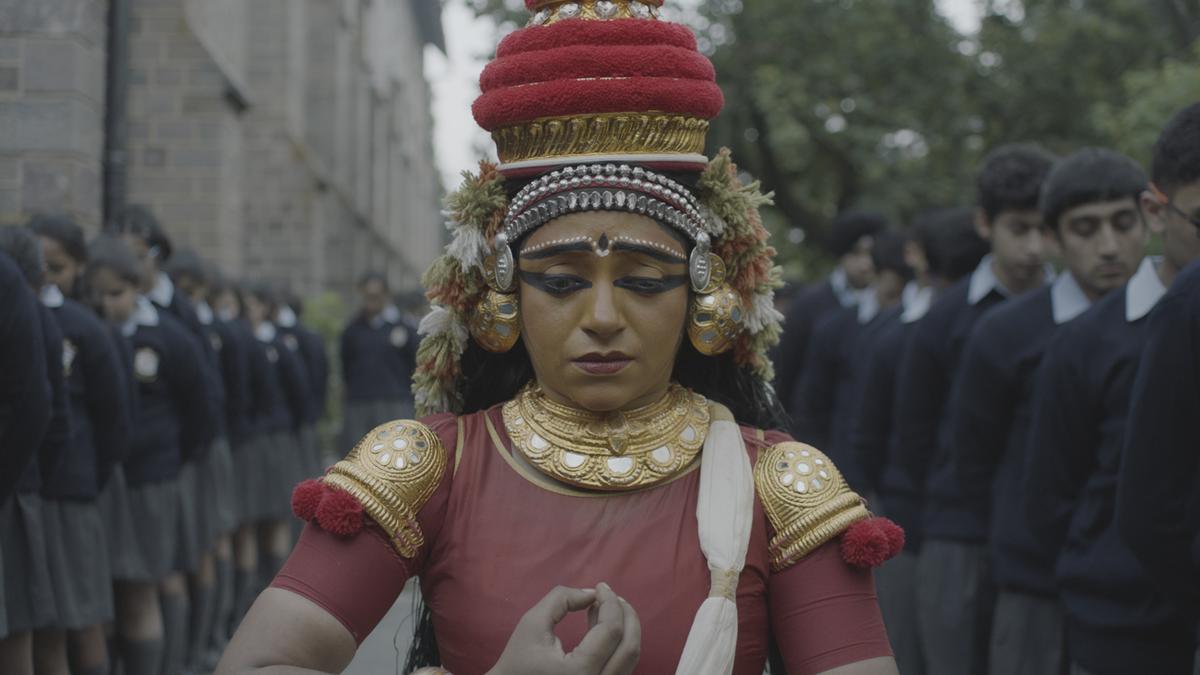
‘Meghdhoot’, directed by Rahat Mahajan, blends traditional performative art forms with cinema to narrate a timeless love story
The Hindu
Rahat Mahajan’s Meghdhoot, doing the festival rounds, is a marvellous fusion of fantasy, myth and magical realism in a contemporary setting
In the cloistered environment of a boarding school in the foothills of the Himalayas, a timeless drama of love plays out, creating visual poetry on screen. The past coalesces into the present seamlessly in filmmaker Rahat Mahajan’s debut feature film Meghdhoot. Performative arts such as Koodiyattam, Kathakali and Theyyam, classical and ritualistic story-telling art forms of Kerala, are woven skilfully into the cinematic narrative to bring alive the immortal story of Jaivardhan and Tharini.
Inspired by Kalidasa’s fifth century epic Sanskrit poem Meghdhootham, Rahat has made a film that bridges eras, places, and cultures into a story of eternal love, reincarnation and redemption. An ancient myth that begins when a Yaksha and a Yakshi fall in love finds realisation in the present through the romance between two students in the boarding school.
Says Rahat: “I have taken the premise of the cloud becoming a messenger between two people from Meghdhootham and crafted a story around that. In the epic poem, the Yaksha is banished to Arunachala, which seems to be in the South while their home Alaka seems to be somewhere in the Himalayas.”
Although Meghdhootham does not delve into why the Yaksha was banished, Rahat has used his creative license to bring a story of lust and longing that results in the banishment of Jaivardhan.
The story of the Yaksha and the Yakshi has been transposed to the present, in the pre-mobile phone era through the romance between the students Jaivardhan and Tharini. Although Rahat began writing the story in 2010, he took time to begin shooting because he was clear that he wanted his work to be a showcase of Indian aesthetics for a global audience.
Initially, Rahat’s idea was to seek the help of a traditional performer to act as the sootradhar of the story and introduce the various segments to the viewer. However, his meeting with seasoned Koodiyattam exponent Kapila Venu had him rewriting the story of the film.
Rahat believes that serendipity brought Kapila to the project. Till a relative of his mentioned Kapila’s name, he had not even heard of the ancient theatre art form of Koodiyattam. From thereon it was Kapila, credited as director of traditional theatre forms, who helped him find the right forms, performers and music to breathe life into his characters from a mystical past. Dashananan (Ravanan) and Hanuman have been performed on screen by Kathakali veteran Peesappilly Rajeevan and Sadanam Bhasi respectively. Kundilarambath Lakshmanan is the Theyyam performer who appears as the ancient Tharini. Kapila’s eloquent gestures, expressions and eyes narrate the story in the Koodiyattam form.













